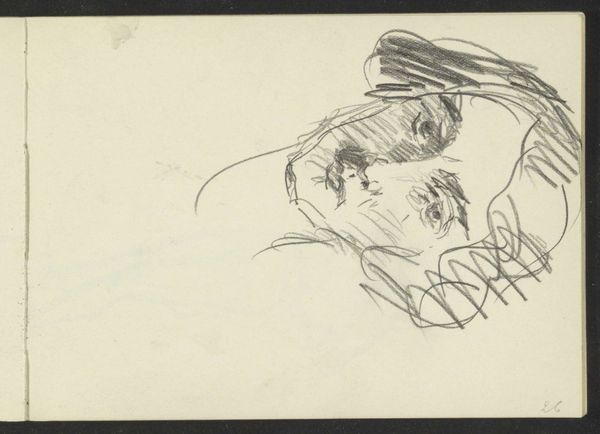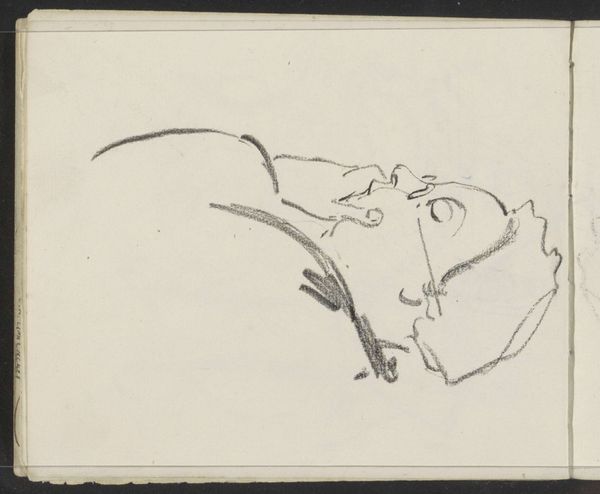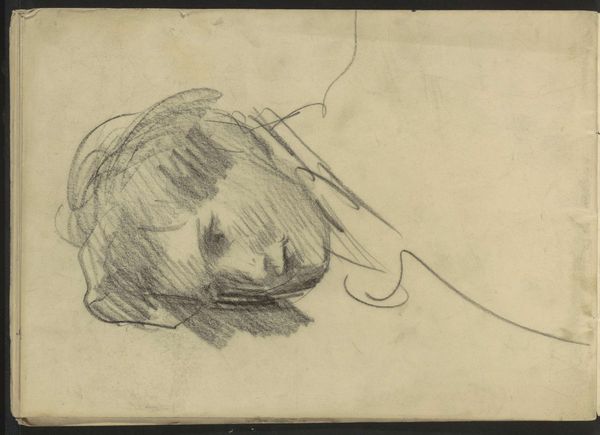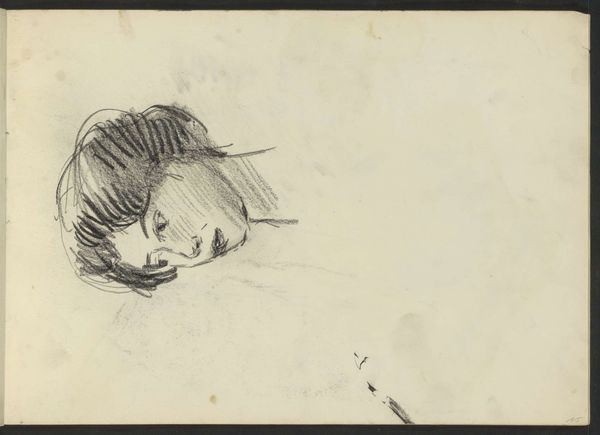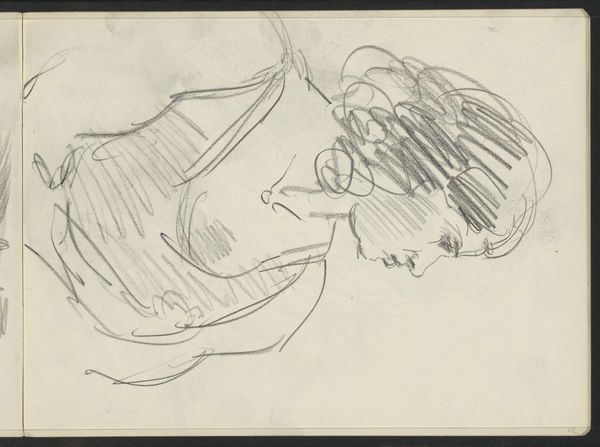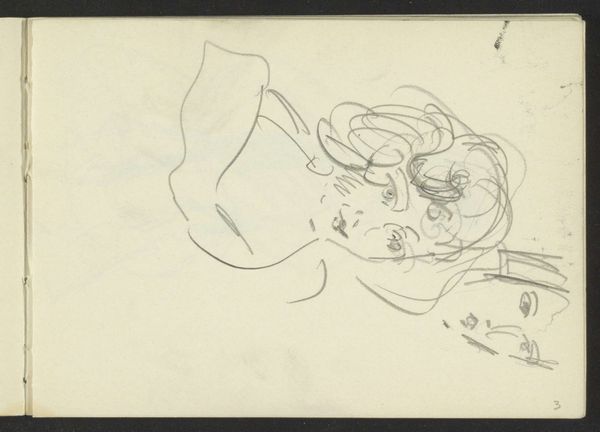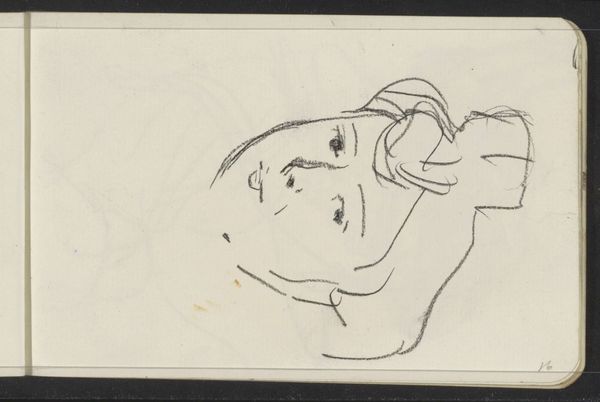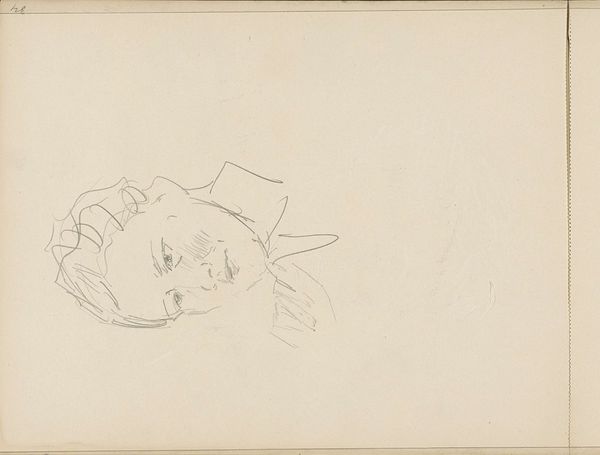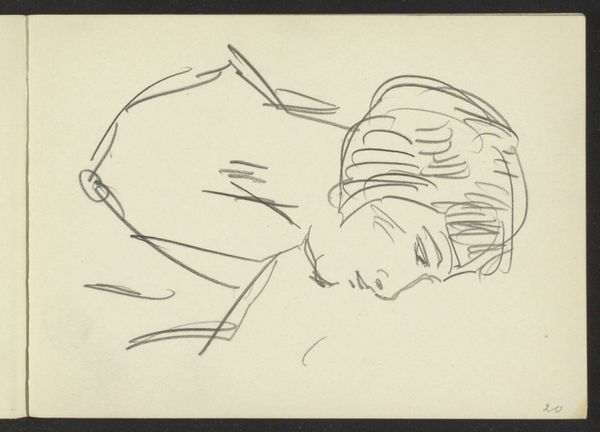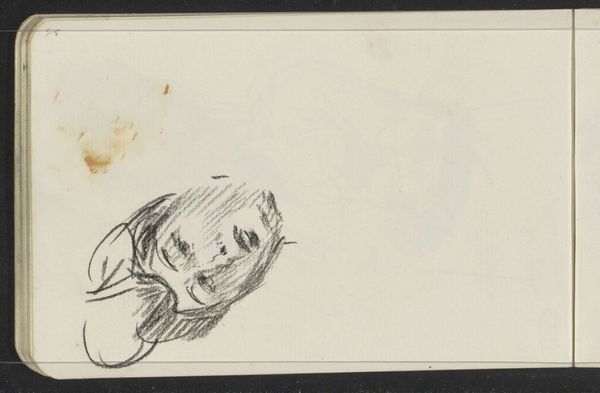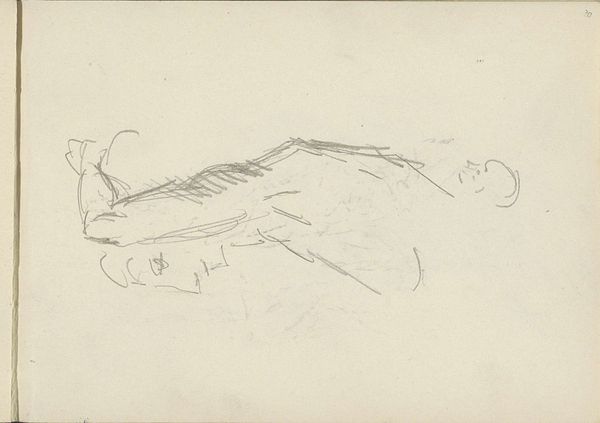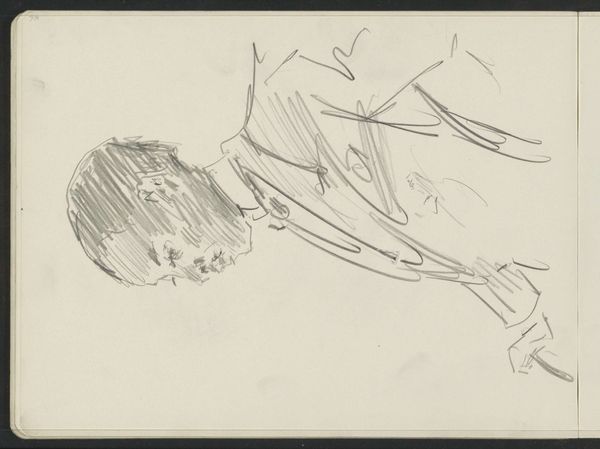
drawing, pen
#
portrait
#
drawing
#
pen sketch
#
figuration
#
line
#
pen
#
academic-art
#
modernism
Copyright: Rijks Museum: Open Domain
Editor: Here we have Isaac Israels’ "Mannenhoofd," a pen drawing dating from around 1923 to 1934, currently held at the Rijksmuseum. It’s a quick sketch, very raw and immediate, almost as if we're catching a private moment. What do you see in this piece, beyond the obvious? Curator: I see a compelling intersection of artistic intent and social context. This isn't just a portrait; it’s a glimpse into the artist's gaze, likely depicting a working-class subject. Israels, a figure known for his depictions of everyday life, often blurred the lines between studio and street. I'm wondering how Israels negotiates the power dynamics inherent in representing his subject? Editor: Power dynamics? Curator: Consider the time period. Who had the agency to be depicted and how? Israels was interested in representing modern life. But whose modern life was he choosing to represent and how did it affect both his intentions and artistic outcomes? Is he giving the subject a voice, or is he speaking for him? And how does that relate to modernism? Editor: I guess it hadn't occurred to me to look at it from a social justice perspective. I was mainly interested in the technique. Curator: The technique serves the social narrative. The rough lines and unfinished quality could be interpreted as a deliberate choice to avoid idealization, resisting the academic conventions that often perpetuated social hierarchies. The sketch challenges the norms of traditional portraiture, almost hinting at an act of democratizing representation. Editor: So you're saying that by deconstructing the traditional portrait, he’s actually making a political statement? Curator: Precisely. Art is rarely made in a vacuum. Editor: That makes me see this sketch in a whole new light! Thanks. Curator: My pleasure. The real joy is in uncovering the layers beneath the surface, isn't it?
Comments
No comments
Be the first to comment and join the conversation on the ultimate creative platform.
